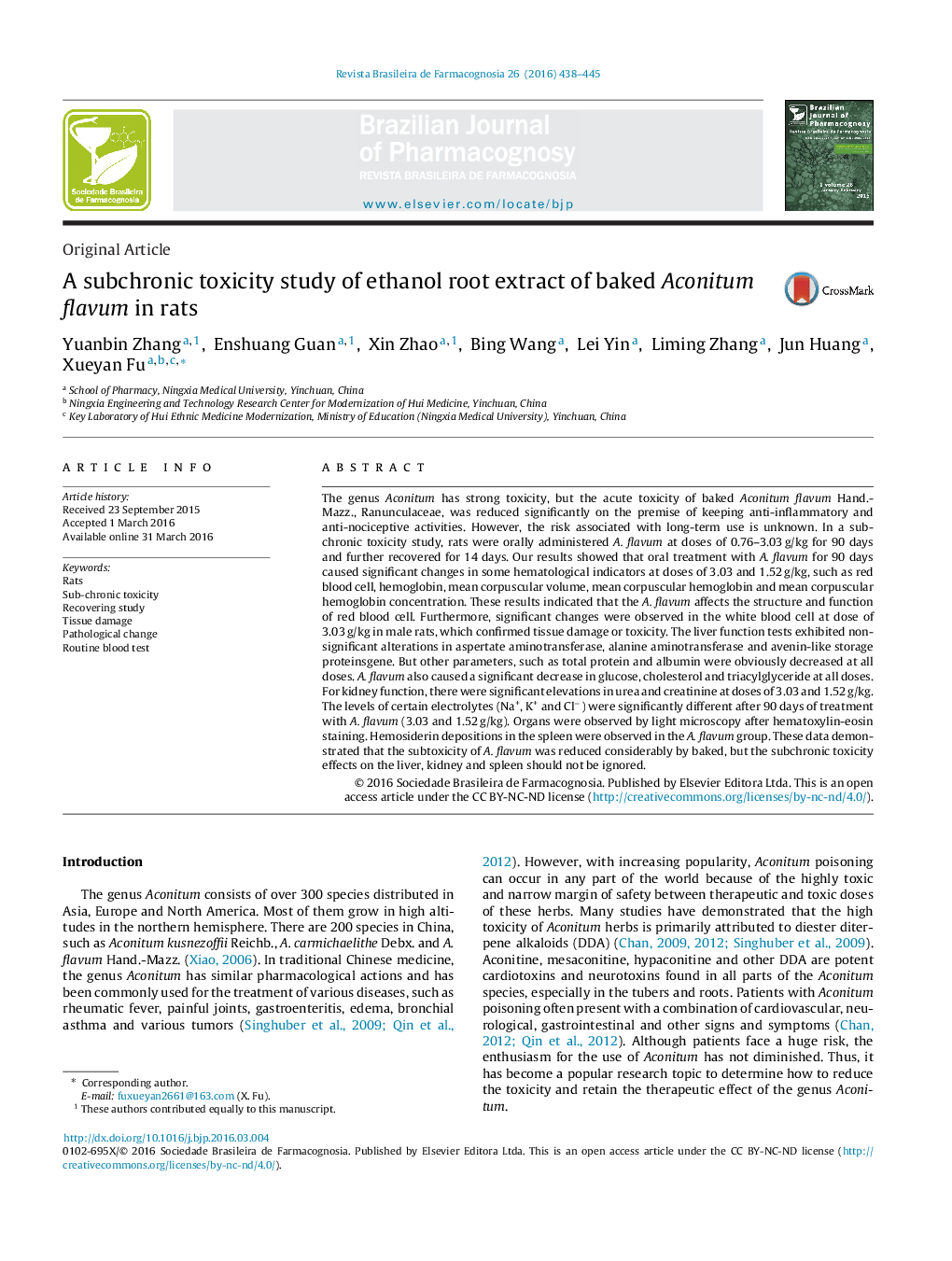| کد مقاله | کد نشریه | سال انتشار | مقاله انگلیسی | نسخه تمام متن |
|---|---|---|---|---|
| 2577515 | 1561467 | 2016 | 8 صفحه PDF | دانلود رایگان |
The genus Aconitum has strong toxicity, but the acute toxicity of baked Aconitum flavum Hand.-Mazz., Ranunculaceae, was reduced significantly on the premise of keeping anti-inflammatory and anti-nociceptive activities. However, the risk associated with long-term use is unknown. In a sub-chronic toxicity study, rats were orally administered A. flavum at doses of 0.76–3.03 g/kg for 90 days and further recovered for 14 days. Our results showed that oral treatment with A. flavum for 90 days caused significant changes in some hematological indicators at doses of 3.03 and 1.52 g/kg, such as red blood cell, hemoglobin, mean corpuscular volume, mean corpuscular hemoglobin and mean corpuscular hemoglobin concentration. These results indicated that the A. flavum affects the structure and function of red blood cell. Furthermore, significant changes were observed in the white blood cell at dose of 3.03 g/kg in male rats, which confirmed tissue damage or toxicity. The liver function tests exhibited non-significant alterations in aspertate aminotransferase, alanine aminotransferase and avenin-like storage proteinsgene. But other parameters, such as total protein and albumin were obviously decreased at all doses. A. flavum also caused a significant decrease in glucose, cholesterol and triacylglyceride at all doses. For kidney function, there were significant elevations in urea and creatinine at doses of 3.03 and 1.52 g/kg. The levels of certain electrolytes (Na+, K+ and Cl−) were significantly different after 90 days of treatment with A. flavum (3.03 and 1.52 g/kg). Organs were observed by light microscopy after hematoxylin-eosin staining. Hemosiderin depositions in the spleen were observed in the A. flavum group. These data demonstrated that the subtoxicity of A. flavum was reduced considerably by baked, but the subchronic toxicity effects on the liver, kidney and spleen should not be ignored.
Figure optionsDownload as PowerPoint slide
Journal: Revista Brasileira de Farmacognosia - Volume 26, Issue 4, July–August 2016, Pages 438–445
